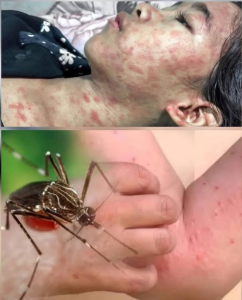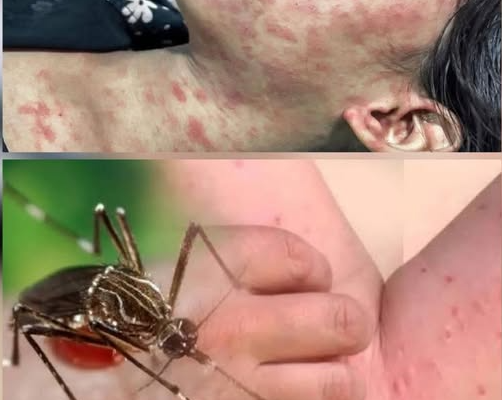A health alert has spread through global media as China confronts a major outbreak of chikungunya, a mosquito-borne virus that has already infected over 7,000 people and continues to rise sharply. What began as localized clusters in the southern province of Guangdong has quickly turned into one of China’s largest recorded outbreaks of this disease, prompting the World Health Organization (WHO) and the U.S. Centers for Disease Control and Prevention (CDC) to issue public warnings and travel advisories. The situation has drawn international attention not only for its scale but also for the lessons it holds about global health preparedness and environmental change.
Chikungunya is a virus transmitted by the Aedes species of mosquito, the same type that carries dengue and Zika. It’s not new to Asia, but mainland China has largely avoided major outbreaks—until now. The first clusters of infection appeared earlier this year in Foshan, a densely populated city in Guangdong Province. Within weeks, thousands of residents were reporting sudden high fevers, severe joint pain, and rashes. Public health officials were initially cautious, unsure whether they were seeing dengue, which is common in the region, or something else. Laboratory confirmation revealed chikungunya as the culprit, marking a dramatic shift in China’s infectious disease landscape.
The WHO now estimates that more than 16,000 people may have been infected, though only about half of those cases have been laboratory confirmed. Many experts believe the true number could be significantly higher, since mild or asymptomatic cases often go unreported. The rapid spread of the virus has been attributed to several factors: heavy summer rainfall, stagnant pools of water in urban neighborhoods, and an abundance of Aedes mosquitoes. The hot and humid conditions of southern China created the perfect breeding environment, and once the virus was introduced, the outbreak escalated quickly.
Symptoms of chikungunya typically appear three to seven days after a mosquito bite. The illness begins abruptly, with high fever and intense joint pain—so severe that it often immobilizes patients. The pain can last for days or even weeks, and in some cases, people report lingering stiffness and swelling months after recovery. Other symptoms include headaches, rashes, nausea, and fatigue. Although rarely fatal, the disease can be extremely debilitating, especially for the elderly or those with preexisting health issues like diabetes and heart disease.
Hospitals in Foshan and nearby cities have been stretched thin. While most patients recover at home, the sudden influx of people seeking care for high fever and joint pain has strained local medical systems. In response, Chinese authorities have launched an aggressive campaign to curb mosquito populations. City workers and volunteers have been seen spraying insecticide, draining standing water, and installing nets around residential areas. In a striking example of modern public health technology, local governments have even deployed drones equipped with sensors and sprayers to locate mosquito breeding grounds in hard-to-reach urban corners.
Officials have also issued public advisories urging residents to wear long sleeves, use mosquito repellents, and keep doors and windows screened. Neighborhood committees have been asked to inspect public spaces for stagnant water daily, and violators who allow mosquito breeding sites to persist may face fines. These measures reflect how seriously China is taking the threat, especially after past experiences with infectious diseases that quickly became national crises.
Internationally, the CDC has issued a Level 2 travel alert, advising people traveling to southern China to take enhanced precautions against mosquito bites. Airlines have not reported major disruptions, but tour operators have already noted cancellations and concerns among travelers. Health officials stress that the disease is not transmitted from person to person—only through mosquito bites—so human-to-human contagion isn’t a worry. However, travelers returning from the region who later develop symptoms are advised to seek medical care immediately and inform doctors about recent travel history.
Experts say the outbreak highlights the intersection of global warming, urbanization, and infectious disease. Warmer temperatures and unpredictable rainfall patterns expand the habitats of mosquitoes, allowing viruses like chikungunya and dengue to spread into new areas. “We’re witnessing the northward migration of mosquito-borne diseases,” said Dr. Lin Zhao, a public health specialist based in Hong Kong. “Regions that never saw these infections before are now becoming vulnerable. This is partly due to climate, but also to rapid population growth and mobility.”
The outbreak has also sparked debates within China about balancing public health and civil liberties. Reports from Guangdong suggest that some residents have complained about chemical spraying and home inspections, saying they were conducted without consent or proper warning. In some neighborhoods, local officials have entered homes to check for standing water, leading to criticism about excessive government intrusion. Still, most citizens appear to support the effort, seeing it as a necessary measure to contain the disease before it spreads further.
There is currently no specific antiviral treatment for chikungunya. Doctors can only offer supportive care—rest, hydration, and pain relief using nonsteroidal anti-inflammatory drugs. There is also no widely available vaccine, although one was approved in the United States last year for travelers at high risk. Chinese researchers are reportedly studying whether local production of that vaccine could be expanded, but such efforts take time and resources.
The World Health Organization has commended China’s swift response but warned that mosquito control alone will not be enough. “Vector-borne diseases thrive where urban planning, sanitation, and climate factors combine,” the WHO said in a recent statement. “Long-term prevention requires sustainable infrastructure improvements, not just emergency spraying.” Experts are also urging regional collaboration with Southeast Asian nations, where chikungunya is more common, to strengthen surveillance and information sharing.
Meanwhile, public anxiety remains high in Guangdong, especially as rumors spread on social media. False claims about the virus being “airborne” or “a new COVID-like threat” have circulated widely online. Health officials have repeatedly reassured citizens that chikungunya is not spread through the air, touch, or food, and that it poses no pandemic-level danger. Still, the memories of previous outbreaks like SARS and COVID-19 have made many Chinese citizens particularly sensitive to any health scare.
For now, the situation appears to be stabilizing. Daily case numbers are slowly decreasing in some districts, suggesting that aggressive mosquito control is having an effect. However, experts caution that outbreaks like this may recur unless long-term preventive measures are maintained. As one local epidemiologist put it, “The mosquitoes don’t care about our borders or our schedules. If we relax too soon, they will come back.”
The chikungunya outbreak serves as a reminder of how fragile modern public health can be in the face of climate shifts and ecological imbalance. A virus carried by a tiny insect has managed to disrupt cities, strain hospitals, and trigger international warnings—all within weeks. It shows that even countries with advanced medical systems are vulnerable when environmental and social conditions align against them.
China’s rapid mobilization, though imperfect, may ultimately keep this outbreak under control. The coming months will be critical. As temperatures remain high and mosquito populations persist, the nation’s capacity to sustain prevention efforts will determine whether the virus fades or becomes an unwelcome seasonal visitor. For now, the world watches as China battles a microscopic enemy on a massive scale, hoping that lessons learned here can help prevent the next outbreak elsewhere.

